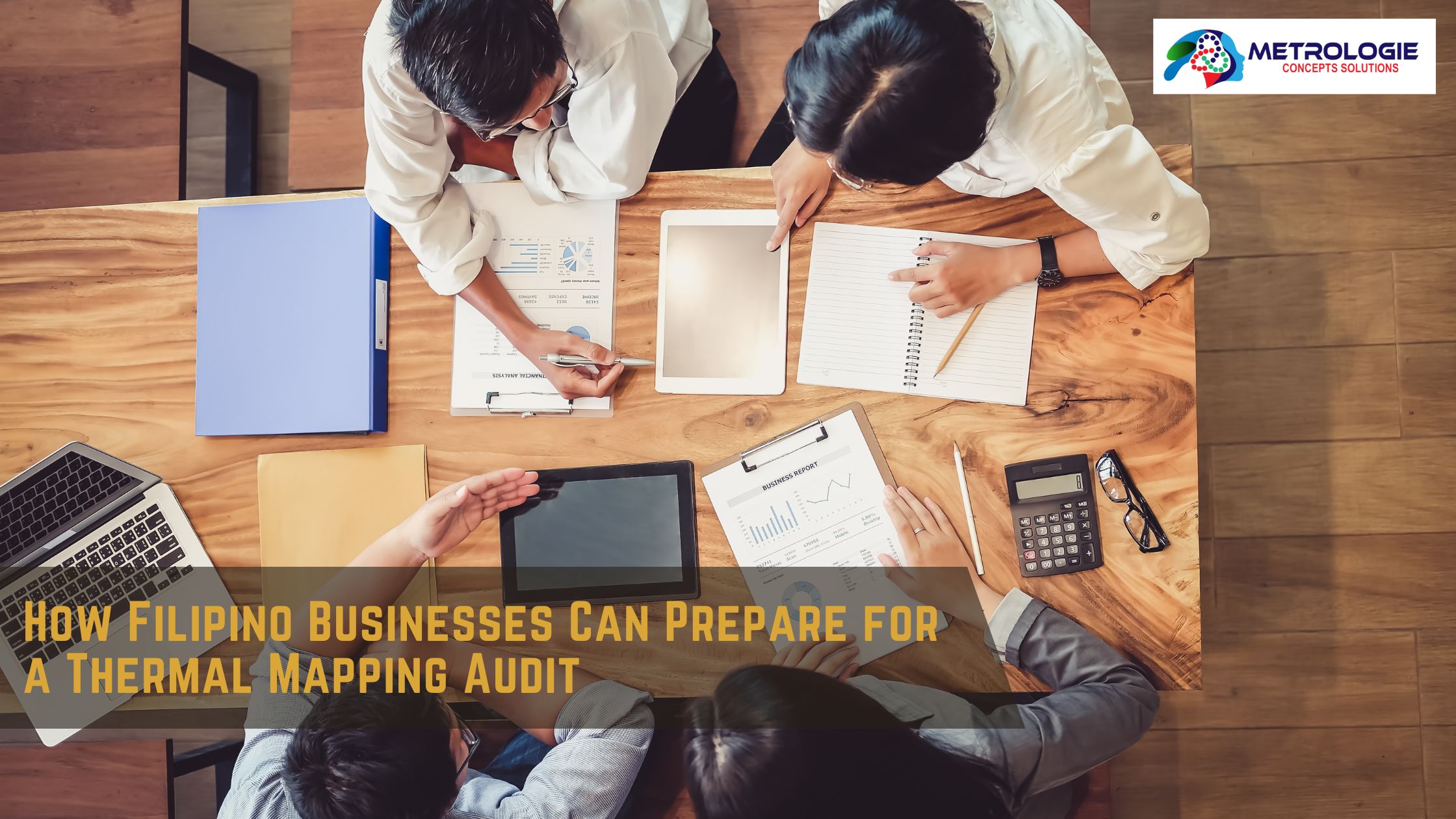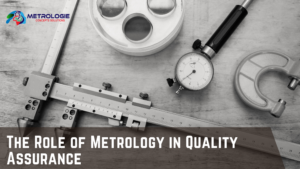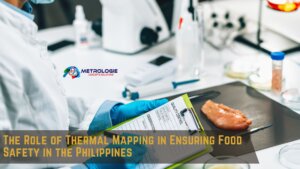Thermal mapping, also known as thermography, has emerged as a valuable tool for Filipino businesses across diverse sectors. From predictive maintenance in manufacturing to energy efficiency assessments in buildings, thermal imaging provides crucial insights into temperature variations and potential issues. As the adoption of thermal mapping grows, so does the likelihood of thermal mapping audits. Whether mandated by industry regulations or undertaken voluntarily to ensure quality and compliance, preparing for a thermal mapping audit is essential for Filipino businesses. This comprehensive guide outlines the key steps and best practices to help Filipino businesses navigate the thermal mapping audit process successfully.
Understanding Thermal Mapping Audits:
Before delving into preparation strategies, it’s crucial to understand what a thermal mapping audit entails. A thermal mapping audit is a systematic evaluation of thermal data and processes to ensure accuracy, reliability, and compliance with established standards or guidelines. The audit may focus on various aspects, including:
- Equipment Calibration: Verifying the accuracy and calibration of thermal imaging equipment.
- Data Acquisition Procedures: Reviewing the methods used to collect thermal data, including environmental considerations and equipment settings.
- Data Analysis and Interpretation: Assessing the expertise and processes used to analyze and interpret thermal images.
- Reporting and Documentation: Evaluating the quality and completeness of thermal mapping reports and documentation.
- Personnel Training: Ensuring that personnel involved in thermal mapping are adequately trained and qualified.
- Quality Control: Examining the quality control measures in place to ensure the reliability of thermal mapping data.
Preparing for a Thermal Mapping Audit: A Step-by-Step Guide:
Preparing for a thermal mapping audit requires a proactive and organized approach. The following steps can help Filipino businesses ensure a smooth and successful audit:
- Understand the Audit Scope and Objectives:
The first step is to clearly define the scope and objectives of the audit. What specific aspects of your thermal mapping process will be evaluated? What are the relevant standards or regulations? Understanding the audit’s focus will allow you to tailor your preparation efforts effectively. Communicate directly with the auditing body to clarify any uncertainties and obtain all necessary information.
- Review Relevant Standards and Regulations:
Identify the industry-specific standards, regulations, or guidelines that apply to your thermal mapping activities. These may include ISO standards, industry best practices, or specific requirements from regulatory bodies in the Philippines. Familiarize yourself with these requirements and ensure that your thermal mapping processes comply with them.
- Assess Your Current Thermal Mapping Practices:
Conduct a thorough internal review of your current thermal mapping procedures. Evaluate each stage of the process, from equipment calibration to data analysis and reporting. Identify any gaps or areas of non-compliance with the relevant standards and regulations. This self-assessment will highlight areas that need improvement before the actual audit.
- Calibrate Your Thermal Imaging Equipment:
Ensure that your thermal imaging equipment is calibrated by a reputable calibration laboratory that is accredited to relevant standards. Maintain calibration certificates and records for all equipment used in thermal mapping activities. Regular calibration is essential for ensuring the accuracy and reliability of your thermal data.
- Document Your Thermal Mapping Procedures:
Develop and document detailed procedures for all aspects of your thermal mapping process. These procedures should cover equipment operation, data acquisition, data analysis, reporting, and quality control. Having well-documented procedures demonstrates a commitment to quality and consistency.
- Train Your Personnel:
Ensure that all personnel involved in thermal mapping activities are adequately trained and qualified. Training should cover equipment operation, data acquisition techniques, data analysis and interpretation, and reporting procedures. Maintain training records for all personnel.
- Establish a Quality Control System:
Implement a robust quality control system to ensure the accuracy and reliability of your thermal mapping data. This may include regular checks on equipment performance, data validation procedures, and peer review of reports. Document your quality control procedures and maintain records of quality control activities.
- Review Past Thermal Mapping Reports:
Review past thermal mapping reports to identify any potential issues or inconsistencies. Ensure that reports are clear, concise, and contain all necessary information. Address any deficiencies in reporting practices before the audit.
- Prepare for On-Site Inspection:
If the audit involves an on-site inspection, ensure that your facilities are clean, organized, and safe. Make sure that all relevant documents and records are readily available for the auditors to review. Prepare your staff to answer questions about your thermal mapping processes.
- Conduct a Mock Audit:
Consider conducting a mock audit before the actual audit. This will help you identify any remaining gaps in your preparation and give you an opportunity to address them. A mock audit can also help your staff become more comfortable with the audit process.
Industry-Specific Considerations for Filipino Businesses:
While the above steps apply to most businesses, Filipino businesses should also consider industry-specific requirements:
- Manufacturing: In manufacturing, thermal mapping is often used for predictive maintenance. Audits may focus on the effectiveness of the predictive maintenance program and the accuracy of thermal data used to identify potential equipment failures.
- Construction: In construction, thermal mapping can be used for building inspection and energy efficiency assessments. Audits may focus on the qualifications of thermographers and the adherence to relevant building codes and standards.
- Energy: In the energy sector, thermal mapping is used for inspecting power lines and equipment. Audits may focus on the safety and reliability of thermal inspections and the qualifications of personnel involved.
- Healthcare: In healthcare, thermal imaging can be used for medical diagnostics. Audits may focus on the accuracy and reliability of thermal imaging equipment and the training of medical professionals using the technology.
Benefits of Preparing for a Thermal Mapping Audit:
Preparing for a thermal mapping audit offers several benefits:
- Compliance: Ensures compliance with relevant standards and regulations.
- Improved Accuracy: Enhances the accuracy and reliability of thermal mapping data.
- Reduced Risk: Minimizes the risk of errors and costly mistakes.
- Enhanced Credibility: Increases the credibility of your thermal mapping services.
- Continuous Improvement: Promotes continuous improvement of your thermal mapping processes.
Conclusion:
Thermal mapping audits are becoming increasingly important for Filipino businesses. By following the steps outlined in this guide, businesses can effectively prepare for a thermal mapping audit, ensuring compliance, improving accuracy, and enhancing credibility. A proactive and organized approach to audit preparation is essential for success. By investing time and resources in preparing for the audit, Filipino businesses can demonstrate their commitment to quality and ensure the reliability of their thermal mapping activities. This not only benefits the individual business but also contributes to the overall advancement of thermal mapping practices in the Philippines. Embracing best practices and adhering to relevant standards will position Filipino businesses as leaders in their respective industries, fostering trust and confidence in the quality of their products and services.




